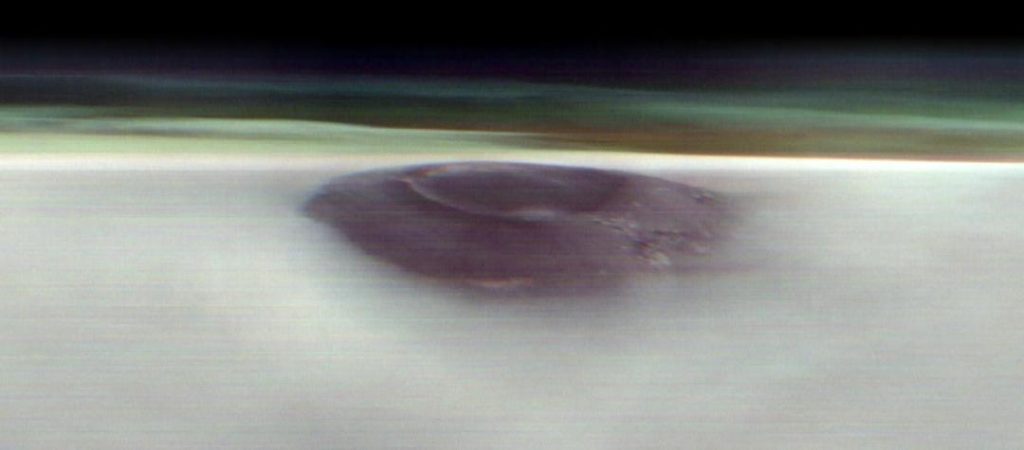
Pic Shows Volcano Peeking Above Clouds on Mars
In a remarkable feat of space exploration, NASA’s Odyssey spacecraft has captured a stunning image of Arsia Mons, one of the largest volcanoes on Mars, peeking above a blanket of clouds just before dawn. The breathtaking photo is a first-of-its-kind look at the towering volcano, which stands an impressive 20 kilometers high.
To put that into perspective, Earth’s largest volcano, Mauna Loa, rises only 9 kilometers above the seafloor. Arsia Mons is not only massive but also one of the most prominent features on the Martian landscape, and this incredible image provides a unique glimpse into the planet’s geological history.
The Odyssey spacecraft, which was launched in 2001, is equipped with a camera that is designed to capture stunning images of the Martian surface. The camera is capable of capturing high-resolution images of the planet’s surface, which are then transmitted back to Earth for analysis.
The image of Arsia Mons was captured just before dawn on the Martian horizon, when the sun was still below the clouds. The volcano’s peak is shrouded in mist, giving it a mystical, otherworldly appearance. The surrounding terrain is rocky and barren, with no signs of life or vegetation.
Arsia Mons is one of the three largest volcanoes on Mars, along with Pavonis Mons and Ascraeus Mons. The three volcanoes are located in the Tharsis region of Mars, which is characterized by its rugged terrain and numerous volcanic features.
The Tharsis region is thought to have been the site of intense volcanic activity millions of years ago, with many of the volcanoes in the region having erupted in the distant past. Arsia Mons, in particular, is believed to have erupted multiple times over the course of its history, with the most recent eruption occurring around 100,000 years ago.
The Odyssey spacecraft has been orbiting Mars since 2002, and has provided a wealth of information about the planet’s geology and climate. The spacecraft is equipped with a suite of instruments that are designed to study the Martian surface and atmosphere, including a camera, a spectrometer, and a thermometer.
The Odyssey spacecraft is just one of many NASA missions that have explored Mars over the years. Other notable missions include the Curiosity Rover, which has been exploring Mars since 2012, and the InSight Lander, which has been studying the Martian surface since 2018.
NASA’s continued exploration of Mars has provided scientists with a wealth of information about the planet, its geology, and its potential for supporting life. The agency’s Mars missions have also helped to shed light on the planet’s history and the processes that have shaped its surface over millions of years.
The image of Arsia Mons, captured by the Odyssey spacecraft, is a stunning reminder of the beauty and complexity of the Martian landscape. The volcano’s towering peak and shrouded surroundings are a testament to the planet’s geological history, and the incredible images that NASA’s spacecraft have captured.
In conclusion, the image of Arsia Mons, captured by NASA’s Odyssey spacecraft, is a remarkable achievement in space exploration. The image provides a unique glimpse into the geology and landscape of Mars, and is a testament to the incredible capabilities of NASA’s spacecraft and the scientists who operate them.






